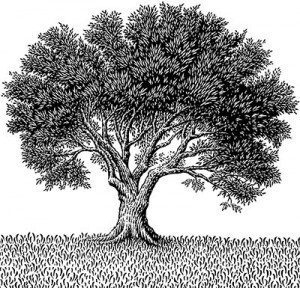Olive Sizes
A small tree that belongs to the genus Olea, the  olive tree is popular in the eastern part of the Mediterranean Basin, which includes some areas of Turkey, Syria and Lebanon. Aside from the Mediterranean region, the tree is also cultivated in some parts of Africa and Asia. The fruit of this species is very famous because it is used in making olive oil. To make sure, that you can grow the plant successfully, it is important to have ideas about the normal olive sizes.
olive tree is popular in the eastern part of the Mediterranean Basin, which includes some areas of Turkey, Syria and Lebanon. Aside from the Mediterranean region, the tree is also cultivated in some parts of Africa and Asia. The fruit of this species is very famous because it is used in making olive oil. To make sure, that you can grow the plant successfully, it is important to have ideas about the normal olive sizes.
The Sizes of Olive
The usual height of the tree is eight meters to 15 meters. The shape of the leaves is oblong and its length is around four centimeters to 10 centimeters. The width of the leaves is approximately a centimeter to three centimeters. The fruit of the tree measures a centimeter to 2.5 centimeters and it has thin flesh. The fruits are harvested before these ripen. These are usually stored in a dry and cool place until the color of the fruits become rich purple.
Additional Information and Other Important Details
Olive trees are cultivated for fruit, leaf, oil and fine wood. The cultivation of the trees started during the Chalcolithic Period. In present times, the trees are cultivated in areas with temperate climate, dry winters as well as rainy summers.
Many people cultivate the trees because the leaves are medicinal. In addition, the trees are also good source of energy. Olive trees have different subspecies, which include the lapperinea that grows in Algeria, maroccana in Morocco and guanchica in Canaries. The countries that are popular in cultivating the plant include the Spain, Italy, Greece, Turkey, Syria and Tunisia. In addition to these, Morocco, Egypt, Algeria, Portugal and Lebanon are also known to produce healthy olive trees.
The taste of fresh fruit is bitter so to make it palatable, it is best to use different curing methods like fermentation. One way of fermenting fresh fruits is by soaking olives in water, sea salt and cider vinegar or white wine. Once the water evaporated, the fruits can be eaten. Other curing methods that can be used aside from fermentation are brine-curing and lye-curing.
Cured olives are healthy because these are rich in copper, vitamin E and iron. In addition to this, it is helpful in treating constipation since these have high content of dietary fiber. Moreover, the fruits are essential for preventing the risk of high blood pressure as well as atherosclerosis.





